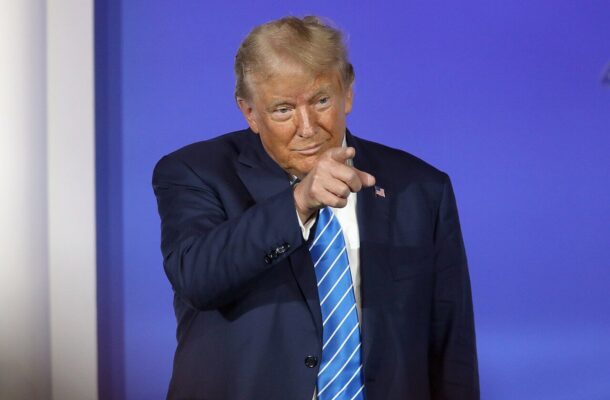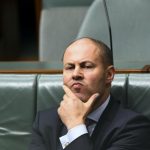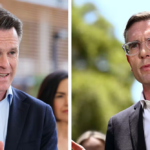Countering the conspiracy mongers

Trying to shut down conspiracy theories with laws and regulation isn’t working. It may be time to try something different.
Australia’s recent Indigenous Voice referendum was marred by baseless allegations about what it actually meant, including the claim that a successful ‘Yes’ vote would lead to land grabs by the United Nations.
In the United States, Donald Trump has consistently led polls in the race for the Republican presidential nomination, even though he has continued to broadcast the ‘Big Lie’ about the 2020 presidential election being rigged – despite overwhelming evidence it wasn’t.
Conspiracy theories are flourishing in today’s political environment. The reach of social media, increasing misinformation and a loss of faith in political elites and mainstream news are heightening the threat that conspiracy theories pose to governance, debate and the public interest.
Research on tackling conspiracy theories has largely focused on creating new laws, institutions and policies. But these approaches risk placing too many restrictions on speech or creating aggressive monitoring mechanisms, which can ultimately undermine the goal of enhancing democratic debate.
Politicians and other opinion leaders could engage with conspiracy theories through discourse — for example, when they field questions at press conferences or write opinion columns in newspapers or online. How should they use such opportunities to counter conspiracy theories and support the conditions for rational democratic debate?
There are three main discursive approaches to challenging conspiracy theories: ignore, rebut and embrace. Each can be effective if used in the right circumstances.
Sometimes, it may be best to deny the conspiracy theory any airing and, where possible, ignore it, in hopes that it may help suppress it.
During the 2008 US presidential election campaign, a speaker at a Minnesota town hall debate said she didn’t trust then-US Senator Barack Obama because he’s “an Arab”. His opponent, Senator John McCain, seized the microphone and denied the conspiracist any opportunity to elaborate on a theory that was false and bigoted.
After taking away the speaker’s microphone, McCain shut the conspiracy theory down and moved the debate on, curtly replying that his opponent was “a decent family man [and] citizen” who he “happen[ed] to have disagreements with on fundamental issues”.
Sometimes, it’s not possible to stifle a conspiracy theory because it has already spread widely. In that case, direct confrontation and rebuttal may be the best course, especially when armed with substantial evidence that runs counter to the conspiracy.
Trump’s claims of a stolen election are undermined whenever someone points to the 63 lawsuits filed by the former President and his allies — all of which either collapsed or were dismissed due to lack of evidence.
This still may not be enough to shift the conspiracy’s strongest adherents. Getting them to change their minds may be impossible, especially if belief in the conspiracy becomes part of their political and cultural identity. But the counterarguments that stand the best chance of convincing trenchant supporters depend not only not only on the evidence in the rebuttal, but also on the person presenting it.
Someone on the same side as the conspiracy’s adherents can have particular power: for instance, a Republican politician arguing against Trump’s stolen election claims is likely to have more weight than a Democrat defending the legitimacy of their win. Then that rebuttal is likely to carry additional weight.
This great power gives political elites great responsibility — they must confront the conspiracies that bubble up from their base. Doing so may cost them votes, but that could be offset by other voters who credit politicians committed to supporting rational democratic debate.
As another strategy, politicians could embrace a conspiracy theory, or at least take on board some of what it is suggesting.
This is the best approach when a supposed theory turns out to be grounded in truth.
The Watergate scandal that led to US President Richard Nixon’s resignation in August 1974 started as a conspiracy theory. Acknowledging its truth when evidence emerged resulted in an incumbent president leaving office and the introduction of new political transparency regulations.
Even conspiracy theories ungrounded in any truth can still be embraced to some extent, and doing so can be democratically productive. A politician can seek to learn from what a conspiracy theory may indirectly signal without conceding the central point that the theory is false.
Engaging with a conspiracy theory allows a seeker to better understand underlying messages: it may point to governance failures (such as rampant inequality or job insecurity) that deserve attention or it may identify a vulnerable group of citizens who are at risk of vilification.
For instance, McCain’s suppression of the conspiracist theory about Obama’s ethnicity could have been more democratically powerful if his shutdown had been followed by an embrace: that, even if Obama were an ‘Arab’, there should be no negative association drawn. In engaging with the supposed truth of conspiracy, McCain could have given a defence of a vulnerable ethnic group in the US.
Even as it distorts the truth, a conspiracy theory can convey real and useful information, giving well-meaning politicians the impetus to make the case for reforms to strengthen governance.
Arguing against a conspiracy theory is a subtle exercise that depends on wise choices that consider, among other things, the nature of the conspiracy theory as well as the context in which it circulates.
But, whatever the circumstances, discourse can be a powerful tool to engage conspiracy theories and support the conditions necessary for rational democratic debate.
Originally published under Creative Commons by 360info™.
Zim Nwokora is a Senior Lecturer in Politics and Policy Studies at Deakin University. A comparative political scientist by training, his research concentrates on political parties, political competition, and public policy.













